February 22, 2013 at 10:29 am
Published by Stanford Blood Center
By Billie Rubin, reporting from the labs of Stanford Blood Center
The antigens on the surface of red blood cells can be made out of proteins, carbohydrates, glycoproteins or glycolipids. The A and B antigens that we commonly hear about belong to the ABO system. You can think of the systems as family members determined by your genes.
February 15, 2013 at 6:00 am
Published by Stanford Blood Center

By Billie Rubin, reporting from the labs of Stanford Blood Center
According to an article from the Telegraph, these gentle guys' blood may be the next big thing in antibiotics, especially for bugs that have become resistant to our usual kind.
February 12, 2013 at 6:00 am
Published by Stanford Blood Center
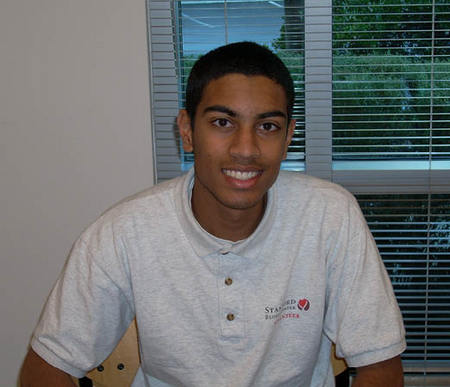
By Julie Peachey, Social Media Manager, Stanford Blood Center
Our staff members are occasionally asked if their positions at Stanford Blood Center are volunteer roles. This question often engenders a chuckle from those imagining their full time jobs being full time volunteer work. But although our nursing, administrative, and other operational staff are paid employees, we do have a variety of volunteer roles to help us achieve our goal of providing blood products to patients in need. In fact, there are over 100 active volunteers who together donate 300-400 hours per week to SBC to help our operation run smoothly.
February 7, 2013 at 1:25 pm
Published by Stanford Blood Center
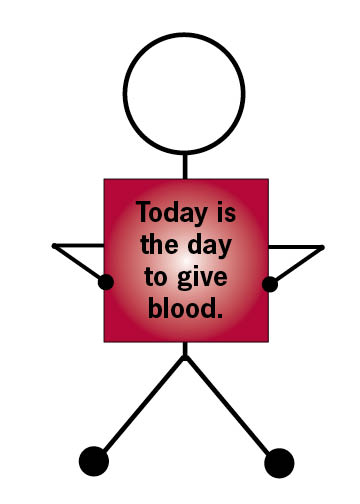
By Richard P. Console, Jr., an advocate for blood donation whose life has personally been touched by the generosity of blood donors. To read the unabridged article, please click here.
If you could save a life, would you? For ninety-five percent of eligible Americans, the answer apparently is, no.
February 1, 2013 at 12:26 pm
Published by Stanford Blood Center
By Julie Peachey, Social Media Manager, Stanford Blood Center
On Thursday, January 31, Stanford Blood Center staff celebrated the grand opening of their new Menlo Park donor center, along with a few special guests. Below are some pictures capturing the momentous occasion.

January 29, 2013 at 1:27 pm
Published by Stanford Blood Center
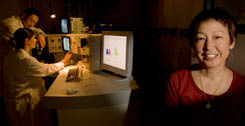
Judith A. Shizuru, MD, PhD, Associate Professor of Medicine, Stanford University School of Medicine - Blood and Marrow Transplantation, will discuss the topic of stem cells at our upcoming Café Scientifique event on Thursday, January 31.
January 25, 2013 at 1:11 pm
Published by Stanford Blood Center
By Julie Peachey, Social Media Manager, Stanford Blood Center
We are critically low in type O-negative blood and are asking for those eligible, to donate within the next couple of weeks. Unusually high demand has depleted O-negative inventory at local hospitals and across the Bay Area, making it difficult to import blood as well.
January 18, 2013 at 10:19 am
Published by Stanford Blood Center
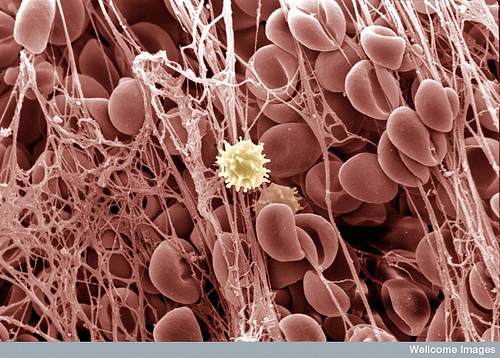
By Billie Rubin, reporting from the labs of Stanford Blood Center
Here's a great picture of red blood cells, platelets, fibrin, and a white blood cell making a clot. There's a lot of activity that goes on in a little cut. The pretty cell in the middle is the white blood cell, waiting to pounce on any bacteria that sneak in through a cut in your skin. You can't see the platelets well in this picture but they are in there, sticking together with the fibrin to make a sort of scaffold that traps red cells. Together they all form the clot and keep your blood nicely contained.
January 14, 2013 at 4:51 pm
Published by Stanford Blood Center
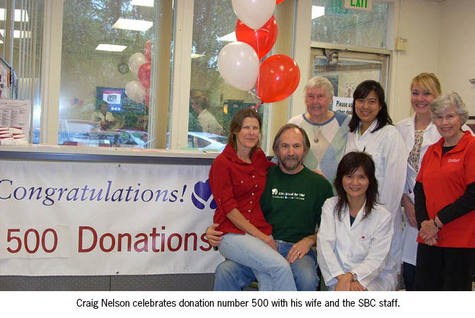
Craig Nelson is one of an elite few who have reached the 500-donation milestone with SBC. We spoke to Craig about the motivation behind each blood donation:
January 9, 2013 at 10:25 am
Published by Stanford Blood Center
By Lia Steakley, Writer for Stanford School of Medicine's Communications & Public Affairs Department This article was adapted from material provided by the Stanford University School of Medicine. Click here to be taken to the original article.
Half of the world's population, some 3.3 billion people, are at risk for malaria. In an effort to reduce the spread of malaria, an international team of researchers is using cell phone data to determine how human travel affects the transmission of the disease and identify regions where imported infections originate.







